Aviation encompasses the design, production, and operation of aircraft, including fixed-wing planes and helicopters. It plays a vital role in global connectivity, economic growth, and trade, enabling rapid transportation of people and goods while fostering tourism and development worldwide.
1.1. Definition and Scope of Aviation
Aviation refers to the design, production, and operation of aircraft, including fixed-wing planes, helicopters, and rotorcraft. It encompasses both military and commercial activities, focusing on mechanical flight technologies. The scope includes aircraft manufacturing, maintenance, and the systems supporting flight operations. Aviation connects global communities, facilitates trade, and enables rapid transportation, playing a pivotal role in modern society. Its applications range from passenger travel and cargo transport to military operations and recreational flying, making it a diverse and essential industry.
1.2. Historical Overview of Aviation
Aviation’s history began in the early 20th century with the Wright brothers’ successful flight in 1903. Over the decades, advancements in technology led to the development of powered, controlled, and sustained flight. World War I and II accelerated innovation, introducing military aircraft and paving the way for commercial aviation; The post-war era saw the rise of passenger airlines, jet engines, and modern air traffic systems, transforming aviation into a global industry connecting people and economies worldwide. Today, it remains a cornerstone of modern transportation.
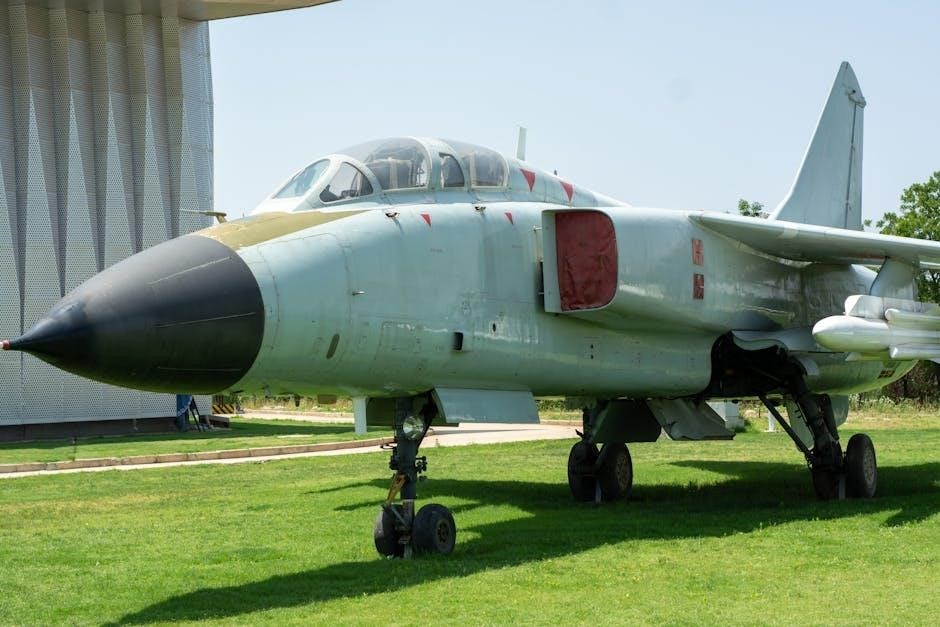
1.3. Importance of Aviation in Modern Society
Aviation is a cornerstone of modern society, enabling global connectivity and economic growth. It facilitates international trade, tourism, and the rapid transportation of goods and people. The industry supports millions of jobs worldwide, from airlines to aircraft manufacturing. Aviation also plays a critical role in emergency services, disaster relief, and medical evacuations. Its impact extends to cultural exchange, fostering global understanding and development, making it indispensable in today’s interconnected world.
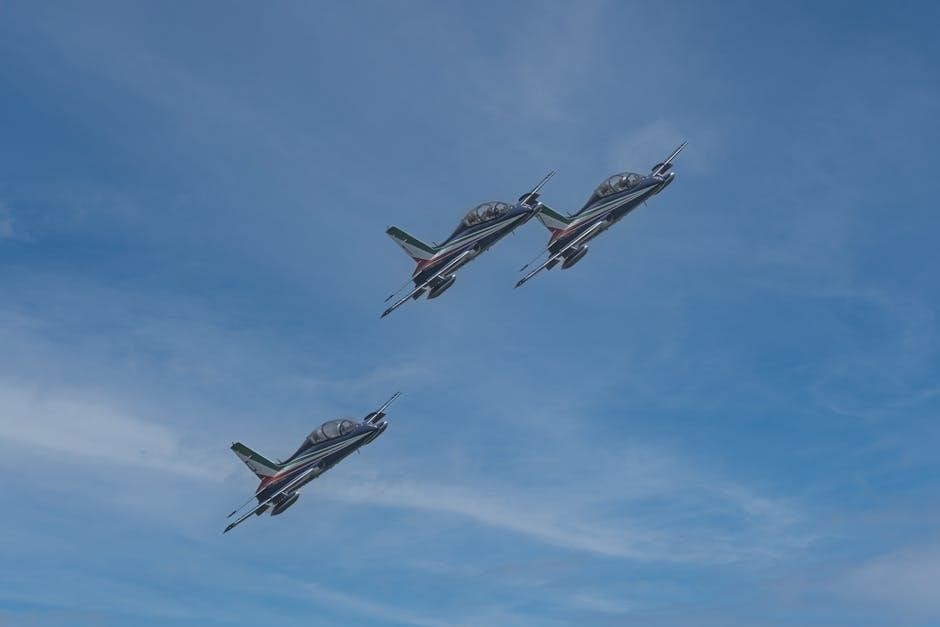
The Aviation Industry
The aviation industry encompasses airlines, aircraft manufacturers, airports, and air traffic systems, driving global connectivity, innovation, and economic growth while ensuring safety and efficiency in air transportation.

2.1. Commercial Airlines and Their Operations
Commercial airlines operate scheduled and chartered flights, transporting passengers and cargo globally. They manage ticket sales, scheduling, and pricing strategies to maximize efficiency. Airlines collaborate through alliances and hubs to expand networks. Safety and customer experience are prioritized, with strict regulations and training. The industry adapts to demand, economic trends, and technological advancements, ensuring reliable air travel. Airlines also play a crucial role in global trade and tourism, connecting cities and fostering economic growth worldwide.
2.2. Aircraft Manufacturers and Their Innovations
Aircraft manufacturers like Boeing, Airbus, and smaller firms design and produce aircraft, driving innovation in aerospace technology. They focus on improving fuel efficiency, reducing emissions, and enhancing safety. Advanced materials and digital systems are integrated to optimize performance. Companies also explore electric and hybrid-electric propulsion, aiming to revolutionize future aviation. These innovations ensure the industry remains competitive, sustainable, and capable of meeting growing global demand for air travel and cargo transport while addressing environmental challenges.
2.3. Airports and Their Role in Aviation Infrastructure
Airports serve as critical hubs for aviation, facilitating the movement of passengers, cargo, and aircraft. They provide essential infrastructure, including runways, terminals, and navigation systems, ensuring safe and efficient operations. Modern airports incorporate advanced technologies like biometric processing and sustainable energy solutions. They also play a key role in economic development, connecting regions and enabling global trade. Airports must adapt to growing demand, focusing on capacity expansion, environmental sustainability, and enhanced passenger experiences to remain vital to the aviation ecosystem.
2.4. Air Traffic Control Systems and Safety Measures
Air traffic control (ATC) systems are essential for ensuring the safe and efficient movement of aircraft. They utilize advanced technologies like radar, ADS-B, and Mode S to monitor and guide planes. Safety measures include collision avoidance systems, weather monitoring, and clear communication protocols. ATC systems prevent accidents by maintaining safe distances between aircraft and optimizing flight paths. These systems are critical for managing increasing air traffic, reducing delays, and ensuring the overall safety of passengers and crew. Their effectiveness is vital to modern aviation operations.
Military Aviation
Military aviation involves the use of aircraft for national defense, surveillance, and combat. It plays a critical role in protecting territories and supporting ground operations globally.
3.1. Types of Military Aircraft and Their Functions
Military aircraft include fighter jets, transport planes, helicopters, bombers, and reconnaissance aircraft. Fighter jets like the F-16 excel in air combat, while transport planes such as the C-130 deliver supplies. Helicopters like the Apache provide ground support, and bombers like the B-52 conduct strategic missions. Reconnaissance aircraft gather critical intel, ensuring informed decision-making. Each type plays a vital role in modern military operations, enhancing national defense capabilities and operational effectiveness globally.
3.2. The Role of Military Aviation in National Defense
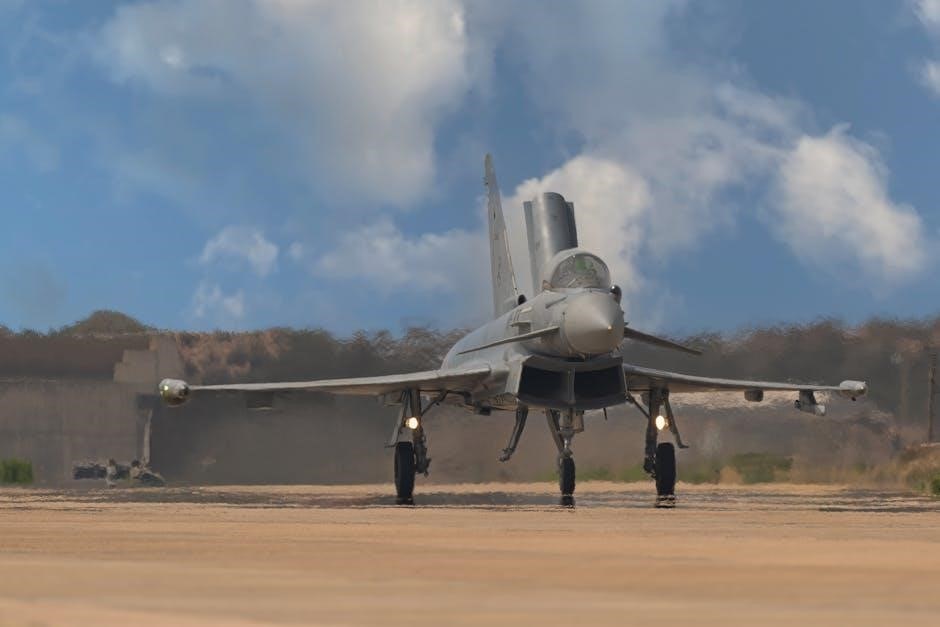
Military aviation is crucial for protecting sovereignty and ensuring national security. It enables rapid response to threats, conducts surveillance, and executes strategic missions; Air superiority allows forces to dominate battlefields, while transport aircraft support troop deployments and supply logistics. Additionally, military aviation deters aggression through its presence and capabilities, safeguarding borders and maintaining global stability. Its role is integral to modern defense strategies, providing a strong backbone for national protection and international peacekeeping efforts.
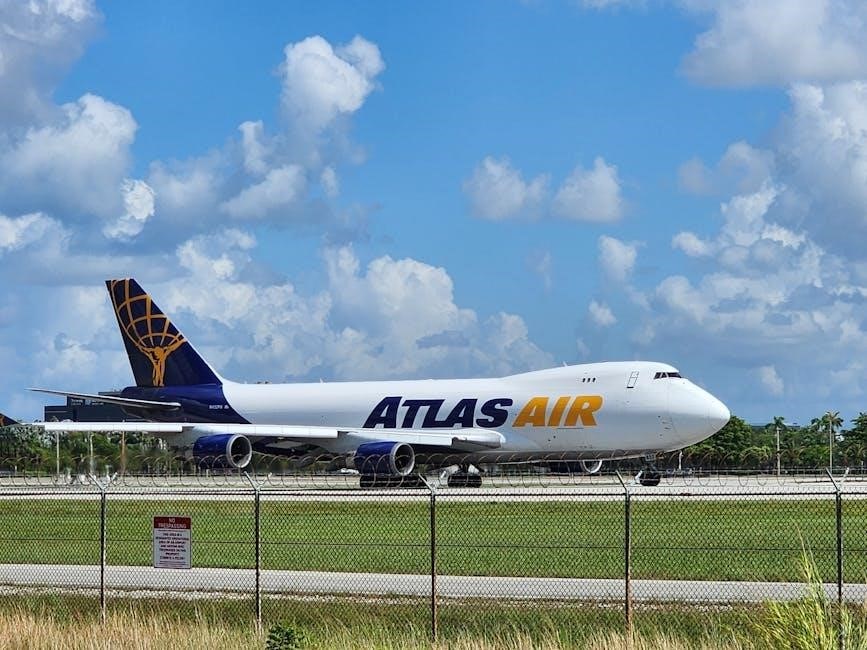
The Future of Aviation
Aviation’s future focuses on innovation, sustainability, and efficiency. Emerging technologies like electric aircraft and sustainable fuels aim to reduce environmental impact while enhancing performance and accessibility globally.
4.1. Emerging Technologies in Aviation
Emerging technologies in aviation are revolutionizing the industry. Electric and hybrid-electric aircraft are being developed to reduce emissions. Autonomous systems and AI are enhancing navigation and safety. Advanced materials like lightweight composites improve fuel efficiency. Sustainable aviation fuels (SAF) are gaining traction, reducing carbon footprints. These innovations are shaping a greener, more efficient future for air travel, addressing environmental concerns while maintaining performance and accessibility.
4.2. Sustainable Aviation Fuels and Environmental Impact
Sustainable Aviation Fuels (SAF) are a key solution to reduce aviation’s carbon footprint. Derived from renewable resources, SAF can cut emissions by up to 80%. Despite its potential, high production costs and limited availability hinder widespread adoption. The industry is exploring scalable production methods to make SAF more accessible. However, debates persist about its true environmental benefits, emphasizing the need for further innovation and regulation to ensure a greener future for air travel.
4.3. Electric and Hybrid-Electric Aircraft Developments
Electric and hybrid-electric aircraft are revolutionizing aviation, offering cleaner and quieter alternatives. Companies like Archer Aviation are pioneering electric vertical take-off and landing (eVTOL) aircraft, targeting urban air mobility. These designs promise reduced emissions and operating costs. Hybrid-electric systems combine electric propulsion with traditional fuels, enhancing efficiency. While battery technology and infrastructure challenges persist, advancements in sustainable aviation fuels and electric systems are paving the way for a greener, more efficient future in air travel and transportation.
Aviation Safety and Security
Aviation safety and security are paramount, ensuring passenger and aircraft protection. Rigorous safety regulations, advanced technology, and security measures are continuously enhanced to mitigate risks and threats globally.
5.1. Safety Regulations and Standards
Safety regulations and standards are critical in ensuring the integrity of aviation operations. These rules, set by organizations like ICAO and the FAA, govern aircraft design, maintenance, and crew training. They emphasize regular inspections, adherence to protocols, and the use of advanced technologies to minimize risks. Compliance with these standards is mandatory for all aviation entities, ensuring a high level of safety for passengers and crew. Continuous updates to regulations address emerging challenges, reflecting the industry’s commitment to improving safety records.
5.2. Security Measures in Aviation
Aviation security is a multi-layered system designed to protect passengers, staff, and aircraft from threats. Measures include passenger screening, baggage checks, and ID verification. Airports employ surveillance, access controls, and security personnel to maintain safety. Technologies like biometric identification and AI-powered systems enhance threat detection. Regulatory bodies, such as the TSA, set and enforce these protocols globally. These measures ensure a secure environment for air travel, addressing risks like terrorism and unauthorized access while maintaining operational efficiency and passenger confidence.
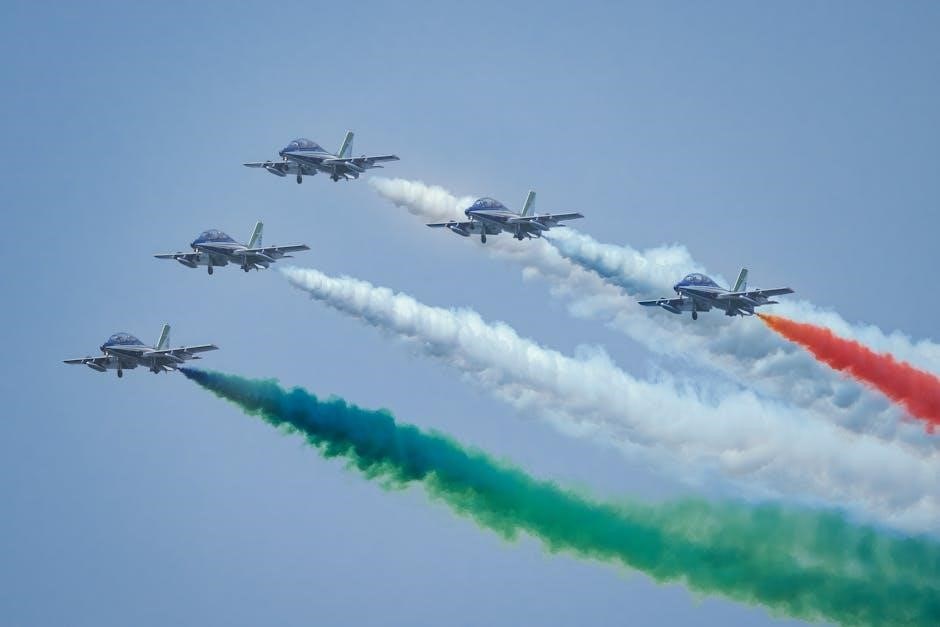
Aviation Training and Education
Aviation training includes pilot, cabin crew, and maintenance programs, ensuring safety and expertise. Institutions offer specialized courses, simulations, and certifications, preparing professionals for the aviation industry’s demands.
6.1. Pilot Training Programs
Pilot training programs are structured to equip aspiring aviators with essential skills. Ground school covers aviation theory, weather, and regulations, while flight training emphasizes practical skills like navigation and emergency procedures. Simulators are used to mimic real-world scenarios, ensuring preparedness. These programs are certified by aviation authorities and include recurrent training to maintain proficiency. Institutions like FNQ Vocational Academy offer hands-on courses, preparing students for commercial pilot licenses and careers in airlines or private aviation sectors.
6.2. Aircraft Maintenance Training
Aircraft maintenance training focuses on teaching technicians to inspect, repair, and maintain aircraft systems. Programs cover airframe, engine, and avionics maintenance, adhering to strict safety standards. Students learn diagnostic techniques, tool usage, and regulatory compliance. Hands-on training with real aircraft components prepares them for certification. Many institutions, like the FNQ Vocational Academy, offer such programs, ensuring graduates meet industry demands and can work effectively in aviation maintenance roles worldwide.
6.3. Cabin Crew Training and Responsibilities
Cabin crew training equips individuals with skills to ensure passenger safety and comfort. Programs cover emergency procedures, first aid, and conflict resolution. Trainees learn to manage evacuations, operate safety equipment, and provide exceptional customer service. Hands-on simulations prepare them for real-world scenarios; Responsibilities include pre-flight checks, in-flight assistance, and post-flight duties; Institutions like Aviation Australia offer comprehensive training, enabling cabin crew to excel in their roles and enhance the overall flying experience for passengers.
Economic Impact of Aviation
Aviation drives global trade, supports tourism, and creates employment opportunities. It facilitates the swift transportation of goods and people, fostering economic growth and connecting industries worldwide.

7.1. Contribution to Global Trade
Aviation significantly contributes to global trade by enabling the rapid transportation of goods, including perishables and high-value items. Air cargo services ensure timely delivery, connecting businesses worldwide and supporting supply chains. This fosters economic growth by facilitating international trade, creating jobs, and enhancing market access for products. The aviation industry is a crucial enabler of global commerce, ensuring efficiency and reliability in the movement of goods across borders.
7.2. Role in Tourism and Economic Growth
Aviation plays a pivotal role in tourism and economic growth by connecting destinations worldwide. It enables millions to travel for leisure, supporting hospitality industries and creating jobs. Air travel stimulates local economies through tourist spending, fostering cultural exchange and revenue generation. Airlines offer convenient and efficient travel options, making remote and popular destinations accessible. This connectivity drives economic development, enhances global accessibility, and sustains the growth of the tourism sector, benefiting communities and nations alike.
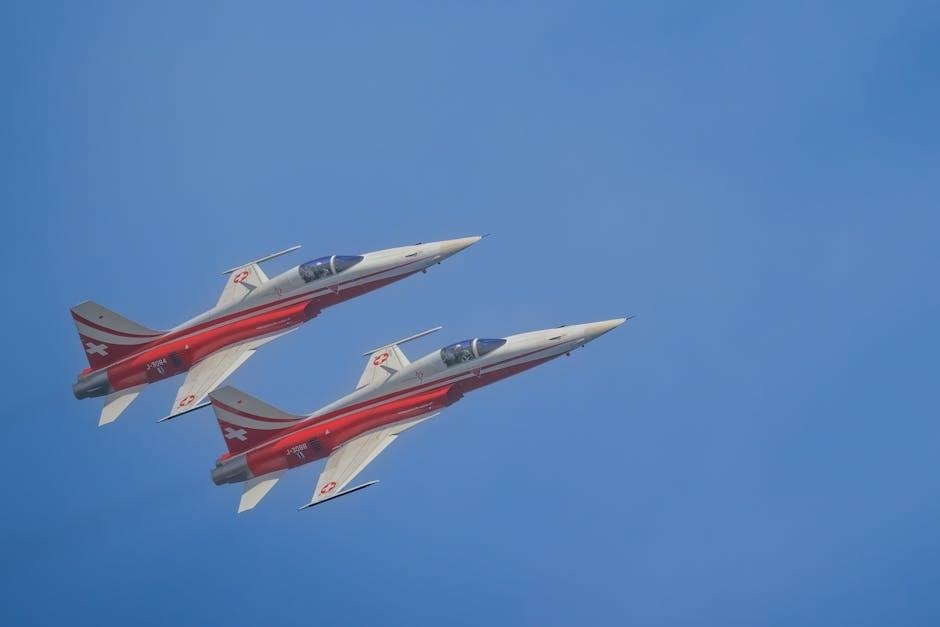
7.3. Employment Opportunities in the Aviation Sector
The aviation sector offers diverse employment opportunities, ranging from pilots and cabin crew to aircraft engineers and air traffic controllers. Airlines, airports, and related businesses create thousands of jobs, while aircraft manufacturers and maintenance firms also contribute to employment growth. Training programs and educational institutions further support career development, ensuring a steady supply of skilled professionals. This dynamic industry continuously evolves, offering new roles in emerging fields such as sustainable aviation and advanced technologies.
